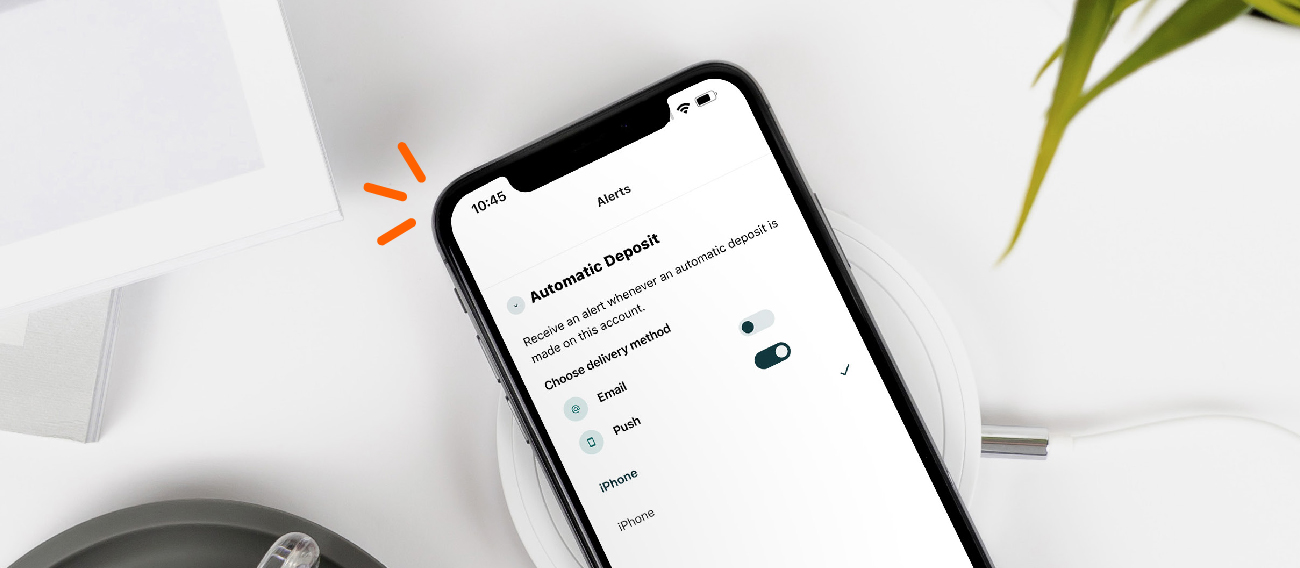Like any habit, the practice becomes easier with time. By saving in your everyday life, you can watch your spending decrease, and your savings increase. This guide will give you practical saving tips to implement in your everyday life. When you do so, you can save more, meet your goals, and plan for your future. Having the right financial tools to save is important. Knowledge and resources go hand-in-hand. Check out these saving tips. Then, head to Alltru to open a Savings account.
Simple Saving Habits
Building healthy habits takes time. With consistency and practice, you can integrate money-saving habits into your daily routine. Regularly saving can help you avoid overspending, reduce your cost of living, and prepare for the future. Here are some money-saving habits to develop.
Stick to a budget. Many people wince and the thought of following a budget. Budgeting is often talked about in a negative connotation. Budgeting is a plan to responsibly manage your income, and that’s a positive thing! The 50/30/20 budget allocates 50% of your income to spend on needs, 30% for wants, and 20% for goals. There are many other budgeting methods you can try. Find the one that works best for you. When you do, use a budgeting app like Goodbudget or Honeydue to help you stay on track.
Don’t make impulse purchases. 89% of shoppers have a notable impulsive shopping history. Create a list of what you need to buy before you go to the store. This will help hold you accountable and avoid impulsive purchases. When you see something that you want to buy that’s not on your list, don’t buy it on the spot. Leave the store and allow yourself a few days to consider the purchase. It you still want to purchase the item on your next visit, use your “wants” money from your budget to pay for it.
Automate your savings. Regularly moving money from your Checking account to your Savings account can be easy to forget. Alltru’s online or mobile banking has tools to automatically make these transfers for you. You can fund your Savings account through a portion of your direct deposit or by scheduling regular transfers throughout the month. This ensures you consistently save without even thinking about it.
Shop resale. Thrift shopping is a smart way to save money while finding what you need. Stores like Uptown Cheapskate and Plato’s Closet have several locations throughout the St. Louis area where you can find fashionable and functional clothing. Goodwill and local resale stores have gently used furniture and other big-ticket items. Plus, buying secondhand reduces waste, making your purchase impactful for the environment too.
Stop unused subscriptions. Subscriptions can be hard to keep track of. You likely have some that you don’t regularly use, if you ever even use them. When was the last time you used your Audible subscription? Look at your bank statement and see what annual and monthly subscriptions you are paying for. Determine which ones you can cancel to save money. Repeat this process every six months to stay on top your subscriptions.
Eat at home. The cost of dining out adds up quickly, especially if you are paying for your family too. The quick coffee runs and drive through deals only cost a few dollars in the moment but can easily total over $100 a month if you aren’t careful. The internet is full of new recipes and restaurant copycat recipes you can try at home. While inflation has raised the price of groceries, buy ingredients you can use across several meals to avoid overspending.
Use a Rewards Credit Card. A Rewards Visa can help you earn points for discounts, merchandise, or cashback just by using it for your everyday purchases. It’s an easy way to save indirectly. However, be mindful not to overspend just to earn more rewards. Make sure you allocate funds in your budget to pay off the card each month, so you avoid paying interest and negate the benefits.
Incorporating money-saving habits into your daily routine is easy and cost-effective. By sticking to a budget, you gain a clear picture of how you spend your money. Automated savings ensure that you set aside a portion of your income every month. Other habits, like shopping secondhand, resisting impulse buys, and dining out less, may take more effort at first, but they become easier with time.
Couponing in 2025
Many think they don’t have time to clip coupons, but doing so can save you a lot of money. While you might not immediately see the benefit of couponing if you’re only paying for yourself and a spouse, the savings add up over time. If you have a large family, the savings can be immediately impactful. Here are helpful tips for couponing to start saving more during your everyday shopping.
Schedule time. Set aside time each week to look for coupons. It doesn’t take long if you prioritize getting it done. Spending an hour a week can save you tens or hundreds of dollars a month. Instead of scrolling on social media in bed, you can use that as your time to find coupons.
Find coupons. Figure out where to find your coupons. Many times, what most consider “junk mail” is full of coupons for local retail stores. Download the mobile apps of your favorite stores. They often have digital coupons you can save to your account that will be automatically applied to your purchase if you did the work of just saving it.
Take advantage of an overage. One of the best perks of couponing is overage. “Overage” happens when the value of your coupon exceeds the price of the item. That means the store either owes you cash or applies credit to your current bill. You can achieve overage by combining multiple coupons—manufacturer, store coupons, using them on clearance items, applying app points, or even price-matching. Don’t be afraid to use as many coupons as you can. If a store won’t stack these deals, you now know for your next purchase.
Steps to Save Toward a Goal
Do you have a big expense coming up soon? Or perhaps you just need a reason to spend less? If you’re wondering how your peers can afford large purchases, the answer could be saving toward a specific goal. By saving with a purpose, you can find yourself in the same position, comfortably paying for what you need without going into significant debt.
Step 1: Determine your goal.
Having a clear goal will keep you motivated to save. Saving for the purpose of spending less money is hard, but saving toward something specific is more attainable. Consider a large expense you know is coming in the future, such as a car or home repair. Saving now can help you make a down payment for each project. You can also save toward an emergency fund so you’ll have a stash of money ready for an emergency situation.
Step 2: Calculate how much you need to save.
One of the hardest parts of saving is determining the total amount you need. For large expenses, figure out what percentage of the total you want to have up front. For other goals like an emergency fund, education, or vacation, set a specific dollar amount. A $1,000 emergency or vacation fund is a good starting point, but you’ll likely need more for educational expenses. Research the cost of your goal so you can calculate how much you need to save.
Step 3: Set your end date.
Your end date is when you need the money in hand. Some goals, like tuition or a vacation, have fixed dates. For other goals, you can set a flexible target. Still, having a clear deadline helps keep you on track and makes your goal feel achievable.
Step 4: Budget your savings.
Now that you know how much you need to save and when you need it, create a plan to save. If you already have a budget, simply add your savings goal as another expense. If you’re new to budgeting, check out this article for tips on how to create a budget. To figure out how much you need to save each month, subtract what you’ve already saved from your total goal. Then, divide that amount by the number of months left until your end date. This is how much you should aim to save each month.
Step 5: Start saving!
Now that the math is out of the way, you can start saving toward your goal. Consider setting up a separate Savings account to keep your goal-specific funds separate from your spending money. This will help you resist the temptation to use your Savings for other purchases. To make saving easier, use online or mobile banking to automate monthly transfers into your Savings account.
You now have a clear plan to save toward your goal. When you’re ready to open a dedicated Savings account, visit Alltru. We offer a variety of saving products to help you make the most of your saving journey in your everyday life.
Saving Long-Term
Saving for the future provides peace of mind knowing your money is growing when your income slows or stops. By starting to save for your future now, you can accrue savings over time. Many of these long-term saving strategies can be implemented in your everyday life. This makes saving easy to do. Check out these long-term saving ideas.
Follow a budget. Budget can seem restricting, but they don’t have to. Think about a budget as a way to stay organized and spend your money where it matters the most. By creating a budget, you can prioritize savings, ensuring you’re not spending all your income each month. Instead, you’ll have funds set aside for bigger expenses down the line. If you are saving toward a goal, slotting in your goal as a line item will help you stay on track.
Lower your debt. It can be difficult to save when you are paying off several loans each month. It’s normal to be paying for a mortgage, auto loan, credit card, and other loans at the same time. The larger, stable loans are predictable. Plus, you know when you’ll have the balance paid off. Credit cards and lines of credit are more unpredictable. Your balance will linger unless you create a plan to pay it off. Find the balance between paying off your debt and saving for your future.
Lock in a high-rate CD. Certificates of Deposit are available in various terms. Each term has a unique interest rate. Financial institutions often increase the interest on certain terms so you can save a lot of money in a short amount of time. When you open a CD, your interest rate is locked in for the length of your term and doesn’t change with the economy. Once you reach the end of your term, you can access your funds or open another high-rate CD and save even more. This is a great option to diversify your financial portfolio.
Start investing. By investing into retirement accounts now, you can ease potential financial strain in the coming years. A great rule of thumb is to contribute 15% of your pre-tax income toward retirement savings. While many can’t start contributing 15% of their income if they haven’t been investing at all, try to start with a smaller percentage and gradually increase your contribution. Some employers also match what you contribute, allowing you to invest more without sacrificing your income. If your employer doesn’t have a retirement plan or you want to supplement your retirement investment, open an IRA with Alltru.
Enroll in life insurance. Many life insurance plans cost just a few dollars a month but offer your loved ones the financial support they need to celebrate your life without added stress. Alltru members can access affordable term and whole life insurance through TruStage. While it’s not the easiest thing to think about, your plan can provide your beneficiaries with relief from a financial burden when they need it most.
If you haven’t made plans to save long term, start by implementing one of these ideas. Once you feel stable, try adding a few more methods for saving in your everyday life. Saving long-term works best when you regularly contribute to your Savings – whether you reduce your spending or invest and grow interest.
Conclusion
By following simple saving tips, you can reduce your spending. The more you practice these habits, the easier it becomes. You’ll get used to the subtle lifestyle changes too. Couponing is another great way to save money week after week. By saving toward a goal, you can fund an expensive purchase with less debt. In addition, saving with a long-term will help your everyday saving changes feel more effective too. Visit a branch or start online to open your next Savings account.







